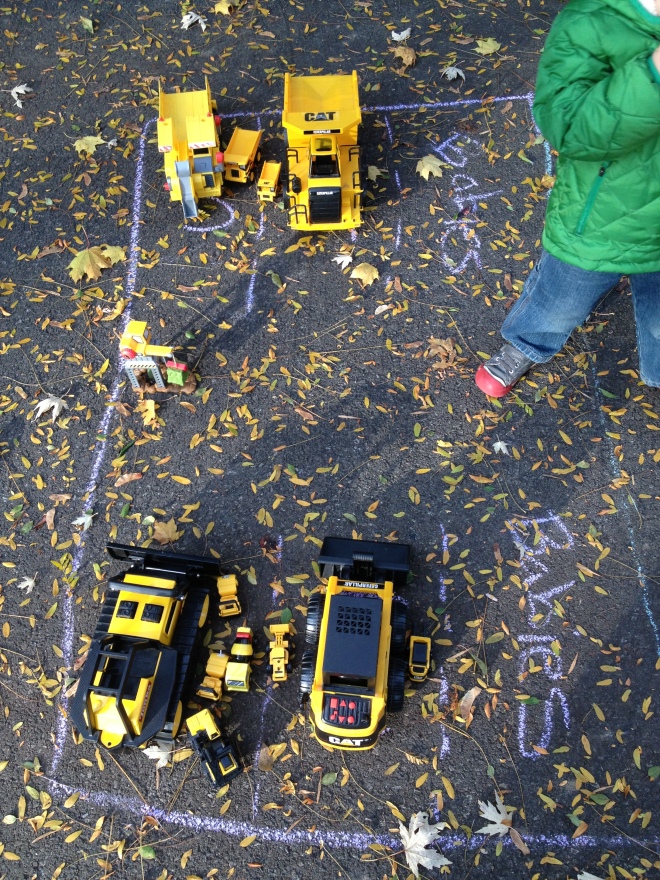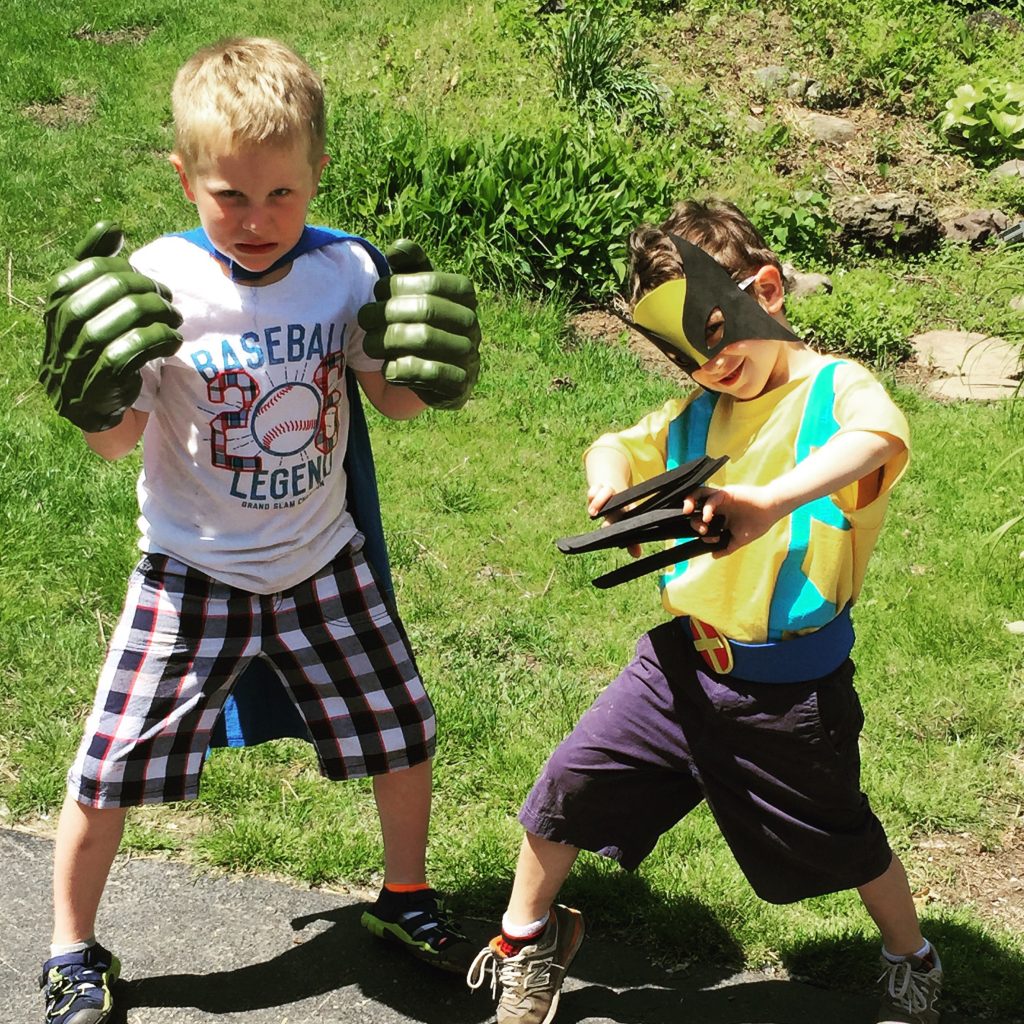The Practice of Attentive Play
What happens when we set the intention of really paying attention to our child’s play?
By: Sarah Fitzgibbons, LMHC, MT-BC
Clinical Director, SPCC
Play is the language children use to communicate who they are, how they are feeling, how they see the world, and what they are working out. There are many benefits when parents play with their children. These benefits can include bonding, a mutually pleasant experience, exercise, creativity, fun or learning. Parents can wear many hats when engaged in play with a child. Sometimes, parents are in the role of a playmate, other times as a teacher or coach. In some play, parents are active, while some play requires parents to be passive participants. All of these ways of engaging in play with a child are wonderful and important, but today we are highlighting the importance Attentive Play between a parent and child. We are using the term “parents” throughout this essay, but this is just as relevant to any caring/caregiving adult.
Attentive Play occurs when a parent intentionally creates a space to listen and observe, notice and wonder about the play, while maintaining the belief that the play is important. When parents are able to carefully and actively pay attention to their child’s play, a child can feel heard, seen, understood and cared for in profound ways. Being with your child in this way allows you to listen to your child in their language. Attentive Play time can and should happen throughout childhood, although the younger a child, the more critical the time is: play is a child’s first language.
So how do you get started with Attentive Play practice?
First, set the intention to try it out.
This may seem obvious, but it’s important for parents to be willing to devote time to honoring and validating the significance of a child’s play. Some parents may decide to try out Attentive Play quietly, without communicating this to their child. Other parents may find it useful to talk about it out loud with their child, saying things like, “Your play is really important. I want to practice really paying close attention to what you are playing today”. Some parents and children find it useful to have a set time every day for Attentive Play, perhaps 30 minutes after dinner, or after nap time. For other parents and children, spontaneous Attentive Play feels like a better fit, perhaps when a child seems significantly engaged in a play story.
Let your child lead.
Once you set the intention to practice a few minutes of Attentive Play, the first thing you should be aware of is letting your child lead. Have you ever had someone put words in your mouth when you are trying to tell an important story? Or give an unsolicited suggestion for how you should communicate? When grownups always take the lead in choosing the toys to play with, the place to play, the story to play, and the pace of the play, children aren’t able to truly use their own voice.
In these special times of Attentive Play, let your child lead.
Allow him to choose which toys and how many (this can be tough!). Allow him to “set up” his play space where ever he is inspired to do so (safely!). Most importantly, let yourself get out of the way of your child’s story and play. Hold back from suggesting how to set up a race track, or what to build with the blocks. Wait for your child to take the lead in what story they will tell with a family of dinosaurs. This might mean that your child has a vision but needs your help executing it (actually constructing the race track). In these cases, think of your child as the director and producer, and you as the assistant! If you and your child are used to an adult taking the lead in play, holding back in this way might be uncomfortable. You might notice that your child solicits your direction and assistance. If this is the case, consider gently redirecting by saying things like, “I really want to see what happens when you decide”, “I am so interested to know what YOU think happens next”, or “tell me how I can best help you play the way you want”.
Notice more.
Noticing can be quiet and noticing can be active. As your child plays, pay attention to the toys they choose, the place in the room they set up, the story they tell. Pay attention to the themes and feelings they play out, and the world they create. Pay attention to the way they move their body, their facial expressions, the cadence of their voice, and the words they say. Once you tune in to this, start noticing out loud to your child by naming what they are doing in a non-interpretive way. You could try things like, “I see you making those cars crash into each other really hard”, “Your voice gets really quiet when you sing your baby doll to sleep”, “You want to play with lots of toys, all at once”, or “You are moving your body all over the room and smiling”. In addition to this type of “labeling” to yourself, you can also give voice to the toys as your child plays in a descriptive way, “The blue car and red car are smashing each other over and over”, or “I am the blue car and I keep smashing in to the other car”.
As an adult, we often feel heard, validated and connected when someone we love pays close attention. Think of how impactful it can be when a friend really “hears” you. This is what a child can feel when we communicate our noticing.
Wonder more.
As with noticing, you can wonder quietly, and wonder actively with your child as they play.
Wondering is the act of being thoughtful about the meaning behind a child’s play. If we are operating from the lens that all play is meaningful, we acknowledge that what our child is playing has a purpose: to express feelings, thoughts or experiences, master a new skill, try out inter-personal (relationship) skills, or to articulate who they are.
Wondering is taking noticing to a deeper level. As you notice your child’s play, let yourself wonder about the meaning, feelings, thoughts, and self-expression behind it. Wondering should feel like light and loose curiosity rather than a tight feeling of scrutiny or ‘trying to get it right’. Try to wonder without being attached to an outcome and practice not coming to conclusions yourself. You might think to yourself, “I wonder if those crashing cars are mad at each other, or playing?”, “When my child sings softly to her baby doll, her face seems to look sad, I wonder what that’s about.”, “I wonder what playing with lots of toys, all at once allows and/or prevents my child from doing/thinking/feeling”, “I am curious what it’s like for my child to move all over the room”.
When you get comfortable with wondering to yourself in a non-judgmental way, you may want to try giving voice to those wonderings. One of the best ways to do this is through gentle statements, rather than questions. Frequently asking a child to explain their play is like asking an adult to do an interpretive dance in the middle of telling a story. Too many questions can be jarring and pull a child out of the world they are creating, and the play-language they are using. While questions have their place, statements of wonder work well, “I wonder if those cars like or don’t like smashing”, “Babies feel lots of things. I wonder how that baby is feeling as you sing to her”, or “I wonder what it would be like to play with one toy at a time”. You may or may not get a response back from your child, but a response isn’t the goal of wondering. The goal is giving voice to the attention and care you have for what your child is expressing.
Keep one eye in and one eye out.
Throughout Attentive Play, parents should be mindful of what the play is bringing up for themselves, as well as some wonderings about what the play is bringing up for your child. As you notice and wonder about what your child is doing and playing, how their play is making them feel, and how they are relating to you through their play, maintain awareness of how you are feeling in the moment: do you notice sensations, feelings, itches? Are you taking deep breaths, is your mind drifting? Does a certain kind of play make you feel engaged and present? Do certain themes, feelings or stories in your child’s play cause you to want to pull away, sneak a peek at your phone, start dinner? This is normal. As attentive observers of and participants in our children’s play, we will have feelings and sensations, challenges and pulls. In fact, the more present you are, the more you will notice what your child’s play brings up for you.
Pay attention to what’s happening in your mind, body and spirit as you play with your child. When you can balance attentiveness to yourself while attending to your child, you are less likely to react without thinking, and more likely to experience an openness in learning about yourself and your child.
Through the practice of Attentive Play, we gain the opportunity to hear and see our child through their own language. We tune in to their experiences, and the way they express their thoughts, feelings and sense of self. We connect with our child in deep and open ways. Our child feels heard and seen, respected and attended to. They internalize this attention in profound, long lasting and impactful ways. The short and long term developmental value of practicing moments of Attentive Play throughout the week is significant and meaningful. It’s a gift to give your child, yourself, and your relationship.





